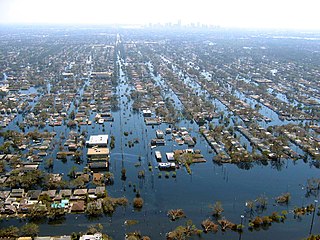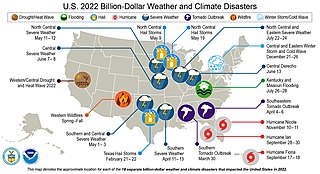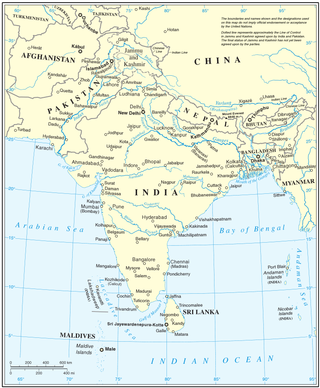
Severe Tropical Storm Bilis, known in the Philippines as Tropical Storm Florita, was a weak tropical cyclone in July 2006 that caused catastrophic damage to areas of the Philippines, Taiwan, and southeastern China. The word Bilis, submitted by the Philippines, means 'speed' or 'swiftness' in Tagalog.

Floods in the United States (2000–present) is a list of flood events which were of significant impact to the country during the 21st century, since 2000. Floods are generally caused by excessive rainfall, excessive snowmelt, storm surge from hurricanes, and dam failure.

The 1989 North Indian Ocean cyclone season was a below-average season in annual cycle of tropical cyclone formation. Despite this, the season had the second highest Accumulated Cyclone Energy in the basin on record behind only 2019 The season has no official bounds but cyclones tend to form between April and December. These dates conventionally delimit the period of each year when most tropical cyclones form in the northern Indian Ocean. There are two main seas in the North Indian Ocean—the Bay of Bengal to the east of the Indian subcontinent and the Arabian Sea to the west of India. The official Regional Specialized Meteorological Centre in this basin is the India Meteorological Department (IMD), while the Joint Typhoon Warning Center (JTWC) releases unofficial advisories. An average of five tropical cyclones form in the North Indian Ocean every season with peaks in May and November. Cyclones occurring between the meridians 45°E and 100°E are included in the season by the IMD.
This is a list of notable recorded floods that have occurred in India. Floods are the most common natural disaster in India. The heaviest southwest, the Brahmaputra, and other rivers to distend their banks, often flooding surrounding areas.
Widespread monsoon flooding occurred in the South Asian countries of Afghanistan, Bangladesh, India, Nepal and Pakistan from July through September 2017. More than 45 million people were affected by the floods, including 16 million children.
In mid-March 2019, monsoonal downpours caused widespread flooding and landslides across South Asia.
The 2020 East Africa floods were a natural disaster in Rwanda, Kenya, Somalia, Burundi, Ethiopia, Uganda, Democratic Republic of Congo, Djibouti and Tanzania, affecting at least 700,000 people. They began when excessive rains began falling in March, leading to massive flooding and landslides. They caused more than 430 deaths, notably in Kenya and Rwanda. In the fall another round of floods hit the African Sahel.

In 2021, Niger has been affected by subsequent floods due to heavy rains, causing several deaths and widespread damage nationwide. Niamey is the most affected area. At least 62 people died, 60 were injured and 105,690 individuals have been affected by the floods. Most fatalities were reported in Maradi Region with 18 deaths.

The following is a list of weather events that occurred on Earth in the year 2022. The year began with a La Niña. There were several natural disasters around the world from various types of weather, including blizzards, cold waves, droughts, heat waves, wildfires, floods, tornadoes, and tropical cyclones. The deadliest weather event of the year was the European heat waves, which killed over 26,000 people, 11,000 of which were in France. The costliest weather event of the year was Hurricane Ian, which caused at least $112.9 billion in damages in Florida and Cuba. Another significant weather event was the Pakistan floods, which killed 1,739 people and a total of $14.9 billion in damages.

Throughout 2022, floods affected most of Africa, killing over 2,100 people. The worst affected country was Nigeria, with over 610 deaths.
Korea has historically suffered several floods due to heavy rains, typhoons, and heavy snowfalls. Most of the flood damage was caused by storms and tsunamis caused by typhoons, and floods.

From January to October 2022, excessive rainfall and widespread monsoon flooding occurred in the South Asian countries of Afghanistan, Bangladesh, India, Nepal, Pakistan, and Sri Lanka. It has become the region's deadliest floods since 2020, with over 3,700 people dead.

In 2020, floods have affected South Asia due to heavy monsoon rains. The floods caused $105 billion USD of damage, making it the costliest standalone flood in modern history, and the ninth costliest disaster of all time. In addition there were 6,511 fatalities, the most reported in a flood since Cyclone Sidr in 2007. Floods continued in 2021 and 2022.

After over 6,500 people died in flooding in 2020, monsoon floods hit South Asia again in 2021.

The following is a list of weather events that occurred on Earth in the year 2023. The year began with a La Niña. The most common weather events to have a significant impact are blizzards, cold waves, droughts, heat waves, wildfires, floods, tornadoes, and tropical cyclones.
Since 5 February 2023, floods have killed over 2,200 people in 15 countries across Africa.
The weather of 2012 marked the fewest fatalities from natural disasters in a decade, although there were several damaging and deadly floods, tropical cyclones, tornadoes, and other weather events. These include blizzards, cold waves, droughts, heat waves, and wildfires.









